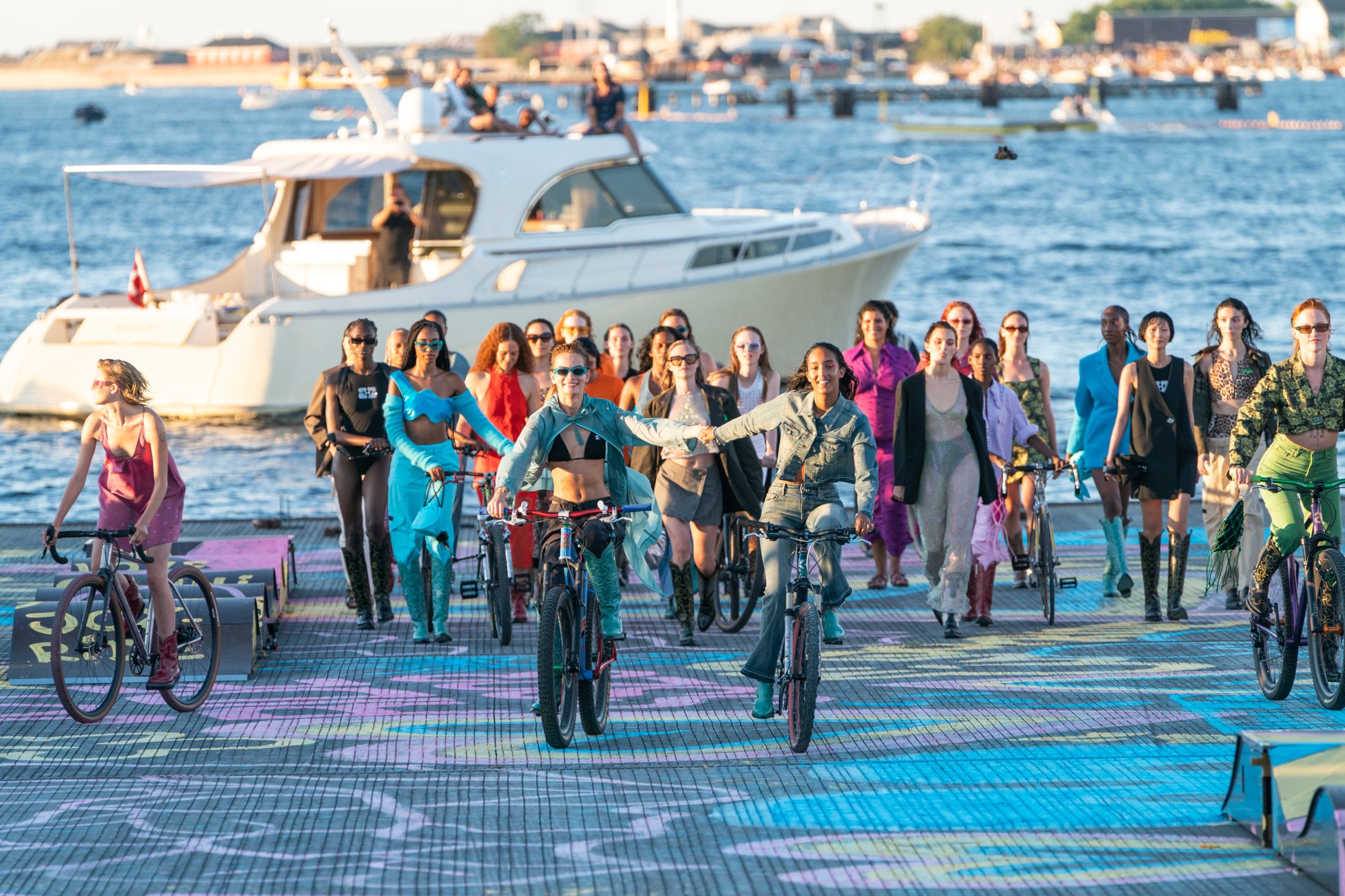Few things beat summer in Copenhagen: the long Scandinavian nights, dips in the harbour… and, of course, fashion week! Yes, while the rest of the European fashion circuit takes a month-long vaycay, every August, the Danish capital stages its spring/summer 2023 showcase of the brightest talent the Nordic region has to offer. As well as familiar names like Ganni, Saks Potts and Holzweiler, SS23 brought a selection of fresh faces to the schedule, with some of the season’s most exciting shows coming from Copenhagen Fashion Week’s first NEWTALENT scheme. Founded in the interest of nurturing the region’s most promising young designers by way of a slot on the schedule and a mentorship programme, this season it platformed two new faces — P.L.N. and Latimmier — and one of Danish fashion’s buzziest young names, A. Roege Hove.
But wait, there’s more! Read on for our run-through of the top 10 collections from Scandinavia’s biggest and boldest fashion week.

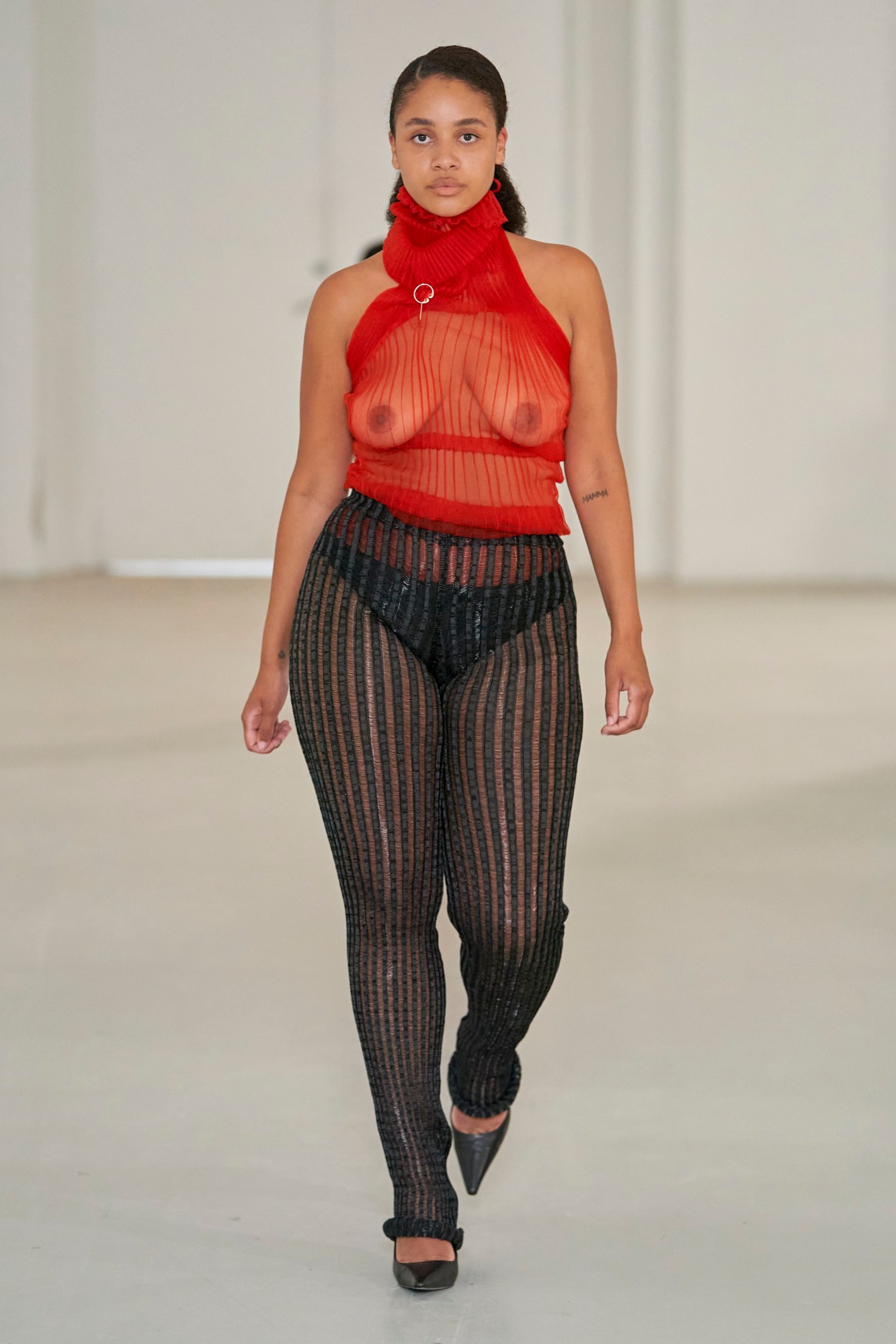
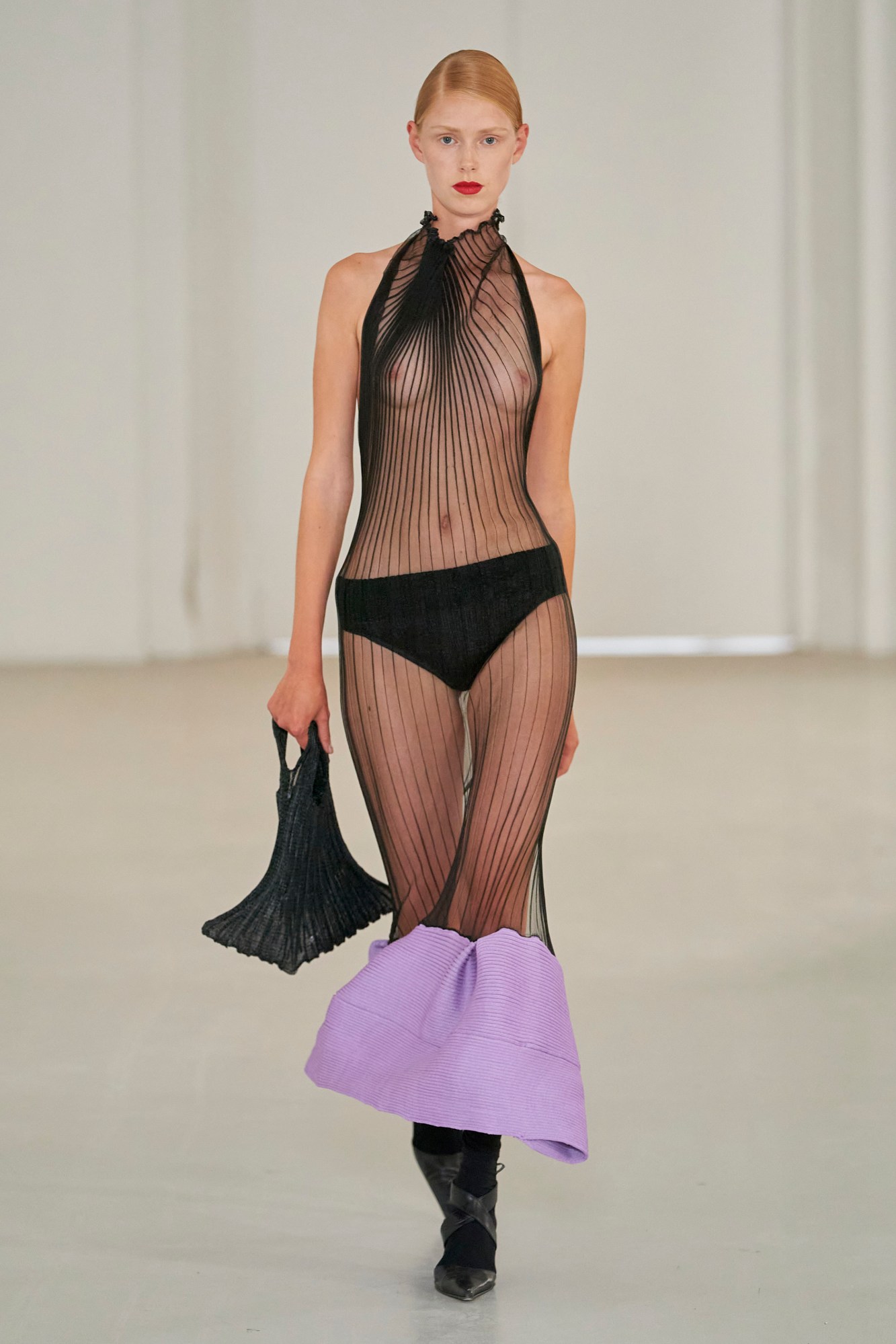
A. Roege Hove
Continuing her reign as Copenhagen’s indomitable queen of knits was Amalie Roege Hove, who presented her eighth collection for her namesake label. Where previous seasons have seen A. Roege Hove steadily build their vocabulary of slinky, zero-waste knits created using fine nylon yarns, SS23 brought a massive expansion in the brand’s remit. Diaphanous halternecks in translucent white and black were paired with miniskirts and asymmetrical sarongs. Fiddly tie-up crop-tops were counterposed by the clean simplicity of striped tube-tops. Dresses were either as slick as liquid poured over the wearer’s body or intentionally bedraggled, composed of tentacular swatches of knit.
Perhaps the most notable expansions for the brand this season came through the use of colour blocking and contrasting yarn weights. Building upon the introduction of hues like scarlet reds and aquamarine blues into her repertoire last season, Amalie brought lime greens and soft lilacs into the mix this time around, with skirt-and-top separates and fishtail dress hems crafted in heavier wool yarns adding a welcome textural diversity to the designer’s work. A truly sophisticated outing from one of the city’s fastest rising stars.
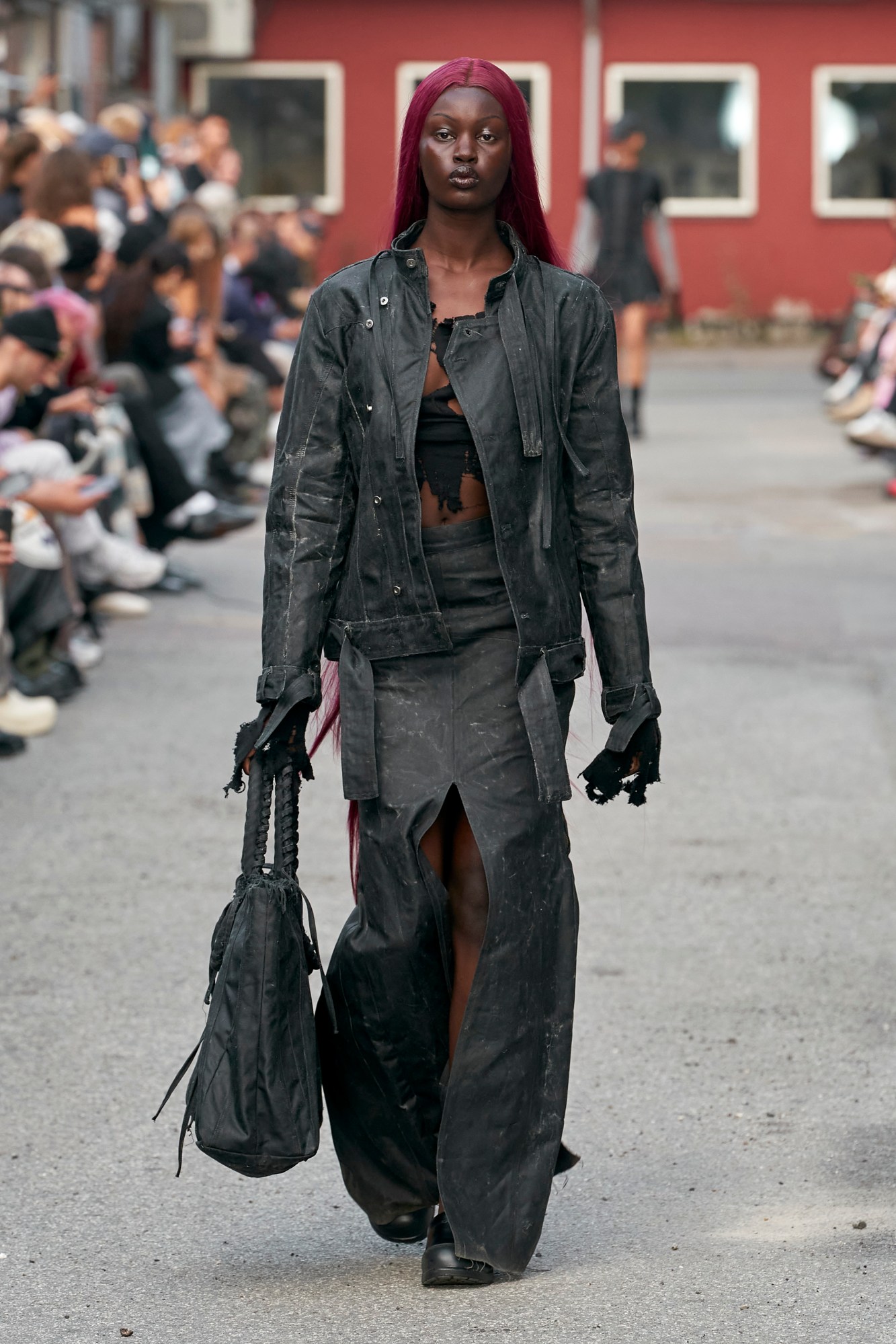

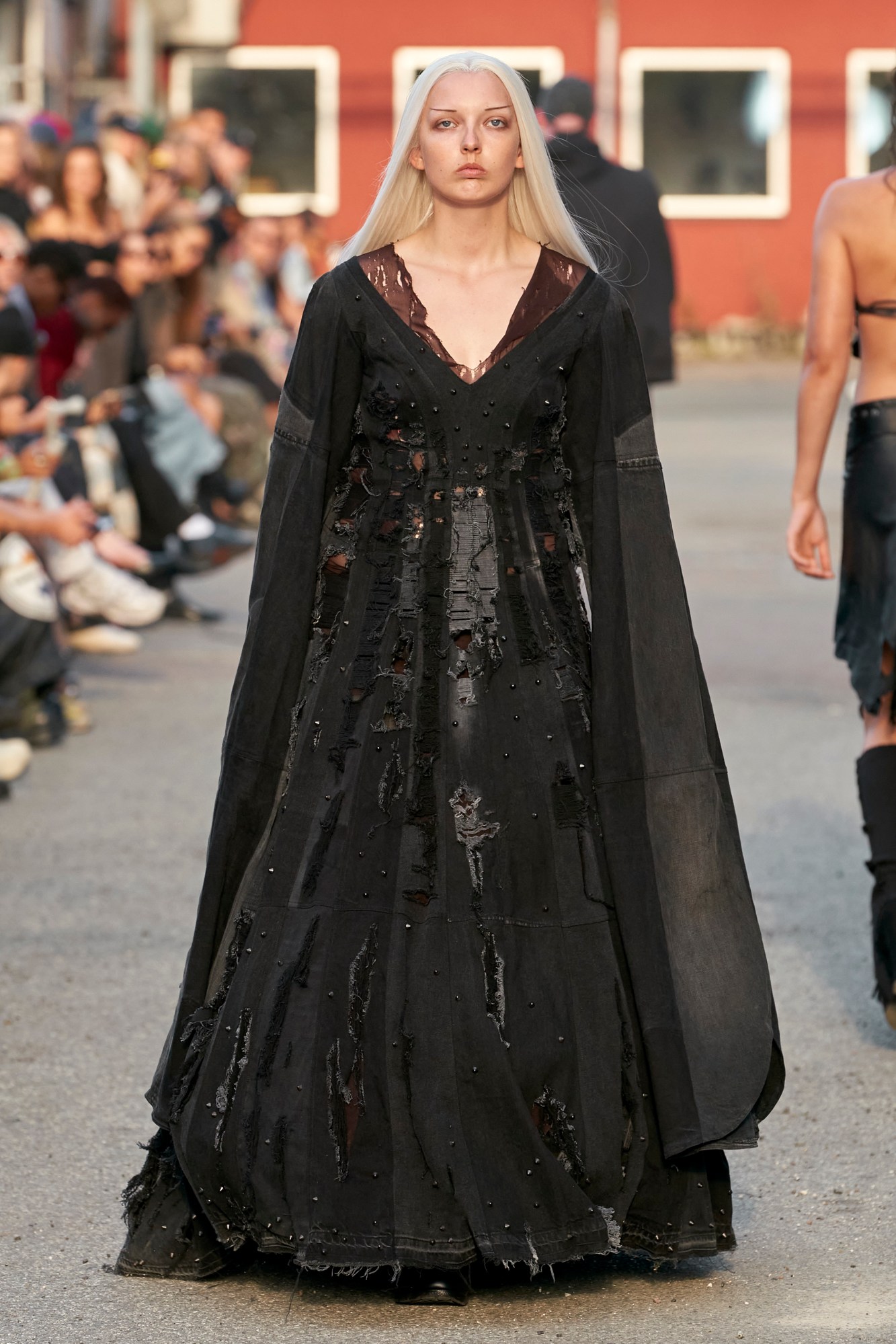
P.L.N.
Is it really fashion week without a buzzed-about debut? This season, that honour fell to Peter Lundvald Nielsen, the founder and creative director of P.L.N. Granted, this wasn’t the first time that we’d come across his work – that was last season, when the Balenciaga and Ottolinger alum presented an edit of broodily handcrafted pieces in an off-schedule exhibition last summer. This time, though, as part of the NEWTALENT programme, he presented his first show in a suitably industrial setting: the forecourt of the factory building that houses his very own studio. Before an audience of black-clad members of the designer’s community came a parade of the neo-goth suffused clothes that drew and expanded upon the remit he set out for himself last season.
Patchworked wide-leg jeans and monastic oilskin coats, for example, returned, but what made the collection really standout was the sense of artful deconstruction – or even disintegration – that brought a moody sensuality to the fore. Bralettes were seemingly twisted from scraps of leather and grey denim; jeans were slashed in a manner that turned them into a blur of flesh and raw-edged seams when seen in motion; jersey tops and the closing look – a hulking denim and oilskin gown that almost felt like the reverse image of a couture bride moment – appeared as though they’d been mauled. Soundtracked by a guttural live performance by Blackhaine, the Salford-based rap and dance artist, it all made for one of the week’s punchiest moments.
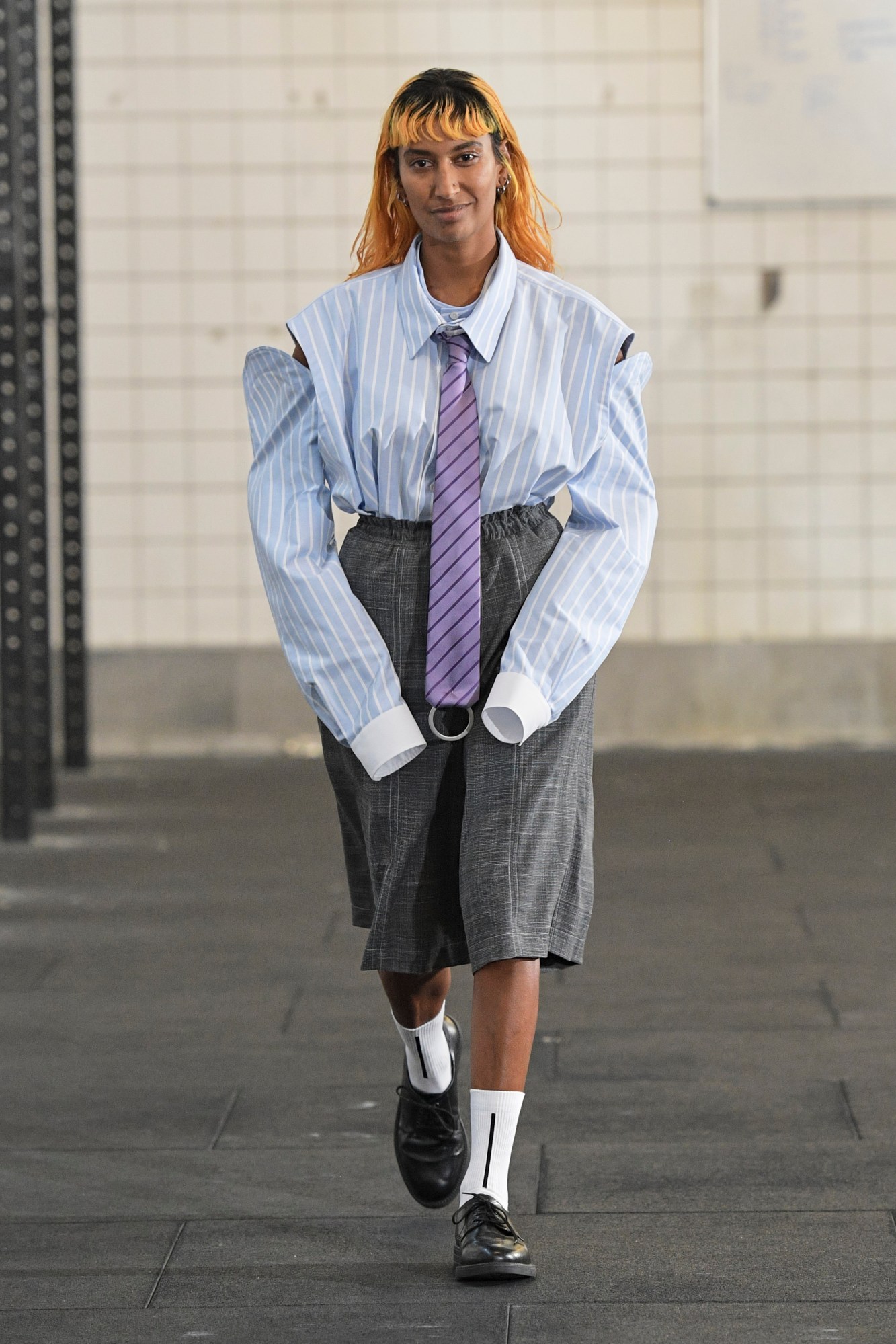
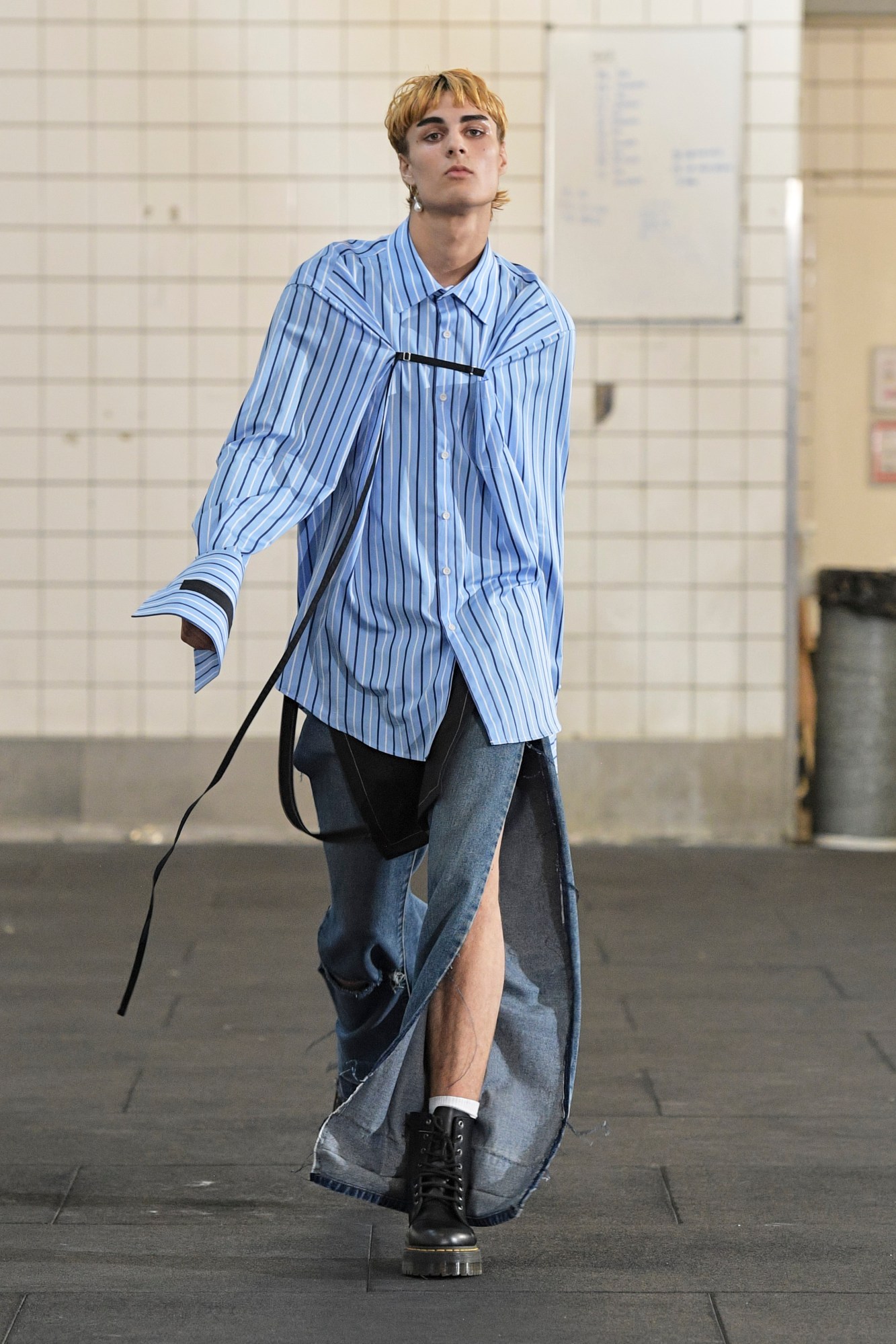
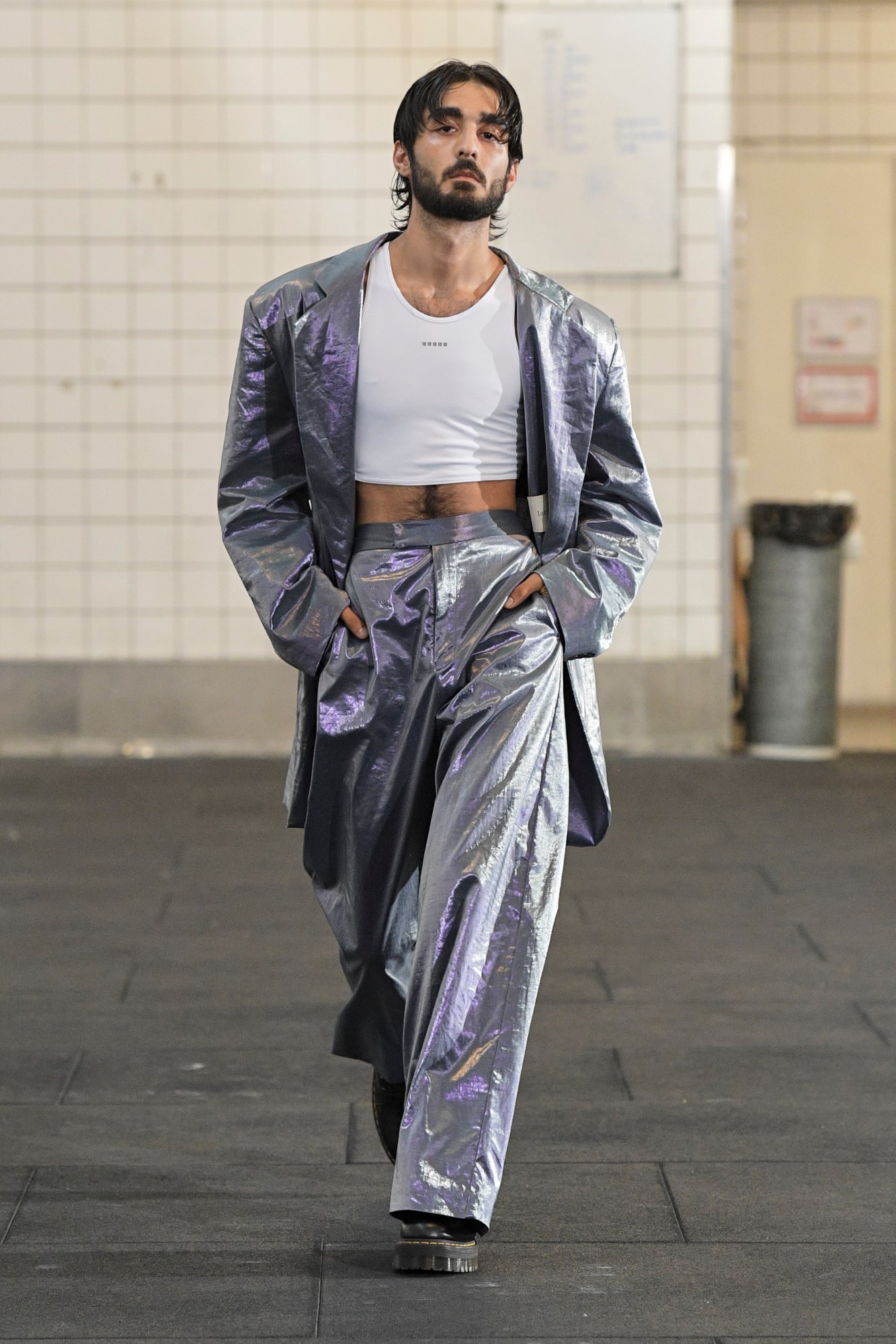
Latimmier
Copenhagen isn’t a city you’d instinctively call quirky, and the same goes for most of the fashion you see on its runways. One designer set on changing that, though, is Ervin Latimer, the young Finn behind Latimmier. Staged in a CrossFit studio close to the Central Station’s train tracks, guests were greeted by the deliciously camp spectacle of strongmen huffing and puffing as they deadlifted 190lb barbells and gave balletic calisthenic performances. The clothes that followed comprised of similarly tongue-in-cheek riffs on archetypal masculinity: pinstripe shirting with detached and dropped sleeves, wide-leg jeans with slashed side seams and boxy, oversized suiting in disco-ready iridescent hues. The sense of campy theatricality that permeated the looks was only heightened by the fact that each of the models, as they turned towards the audience, gave a quirky gesture – a tongue poked out, a kooky eye roll or even a two-fingered salute. Against the backdrop of a fashion week populated by clothes that come across as a little too earnest, this was a welcome breath of fresh air.
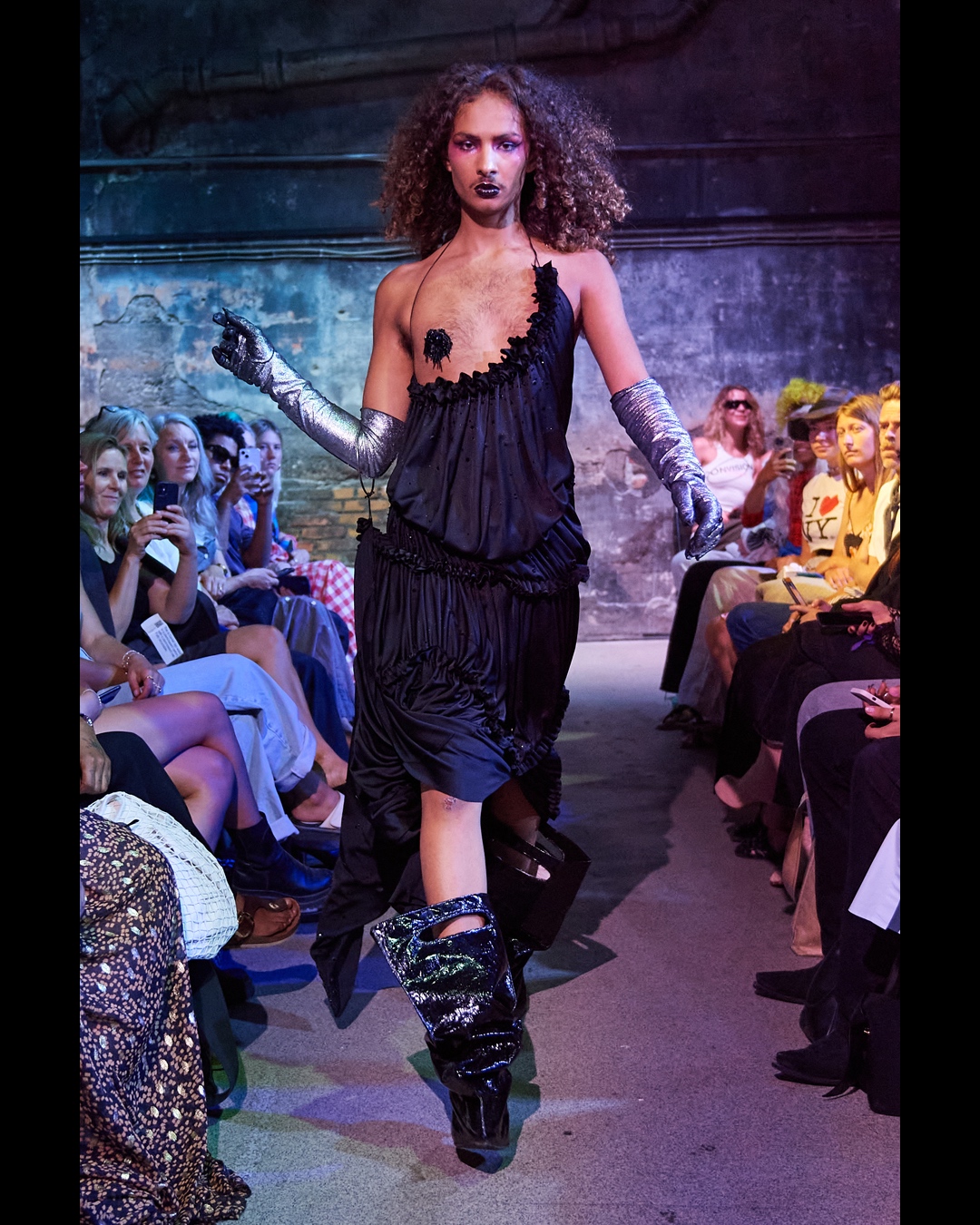
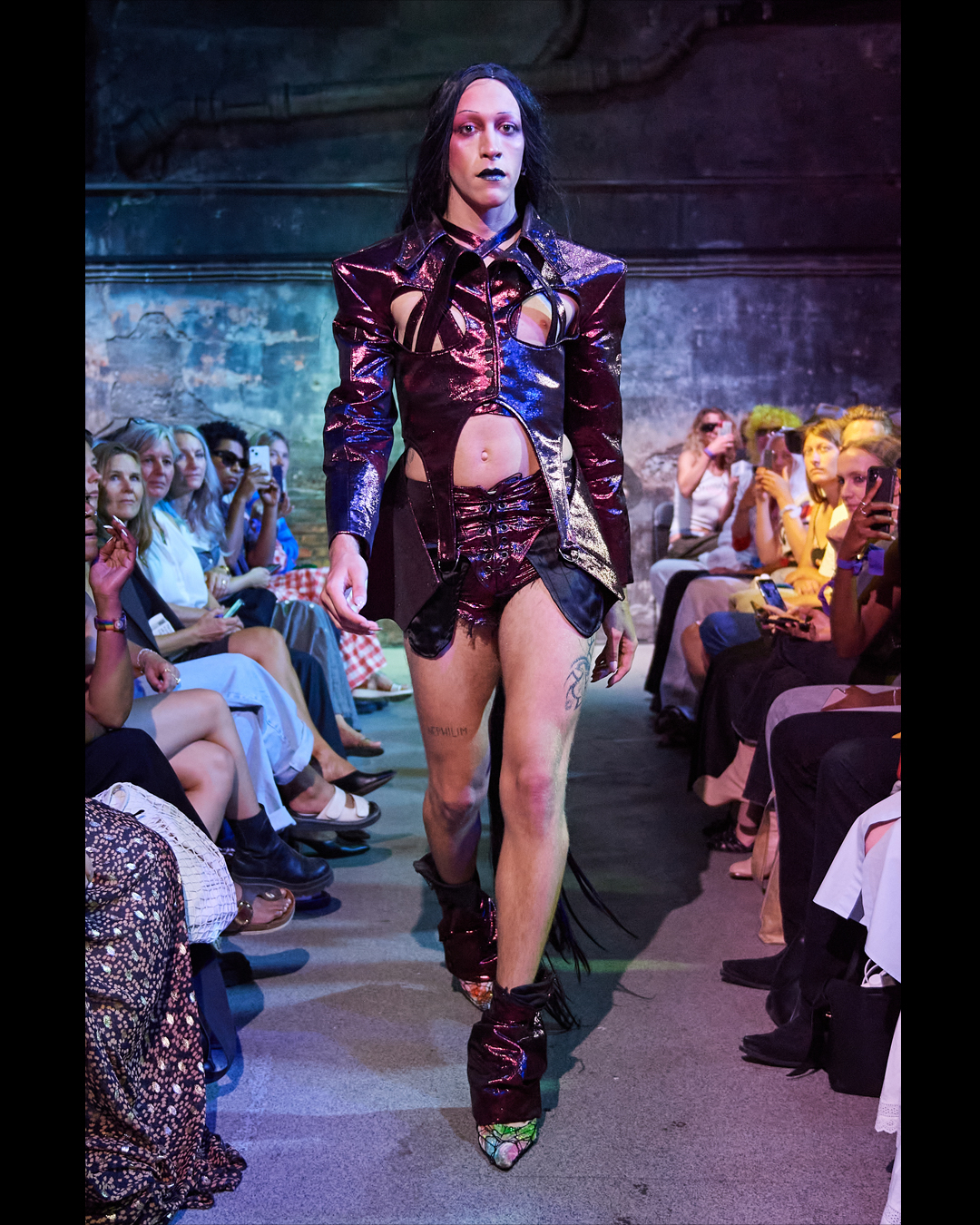

Alectra Rothschild/Masculina
At any fashion week, graduate showcases are an invariable highlight, bringing a jolt of fresh creative energy to the schedule. That holds as true in the Danish capital as anywhere else, with the MA students of the Royal Danish Academy delivering one of the week’s most memorable moments. A standout among this year’s set, though, was the show’s closing collection by Alectra Rothschild/Masculina, who presented a body of work that felt effortlessly at home within the neon-bathed basement club setting chosen for this year’s showcase.
A self-professed “love letter to the trans community”, the clothes she presented explored the notion of embodying multitudes within oneself through the creation of sartorial archetypes, all worn by members of Alectra’s close community. ‘The Raver’ wore skin-cladding patchworked jeans, a poured latex top and a cropped PVC bolero, while the ‘The Babe’ was swaddled in a petrol pink tube dress; ‘The Pirate’ sported a jaunty shouldered cropped cut-out jacket with a ragtag wrapped skirt, and ‘The Showgirl’ wore an itsy-bitsy bikini with a fan of ruffles around the neck, cracking a ponytail whip as she walked. It was the kind of high-camp theatricality that one sees relatively little of in Copenhagen, making it all the more special for it.
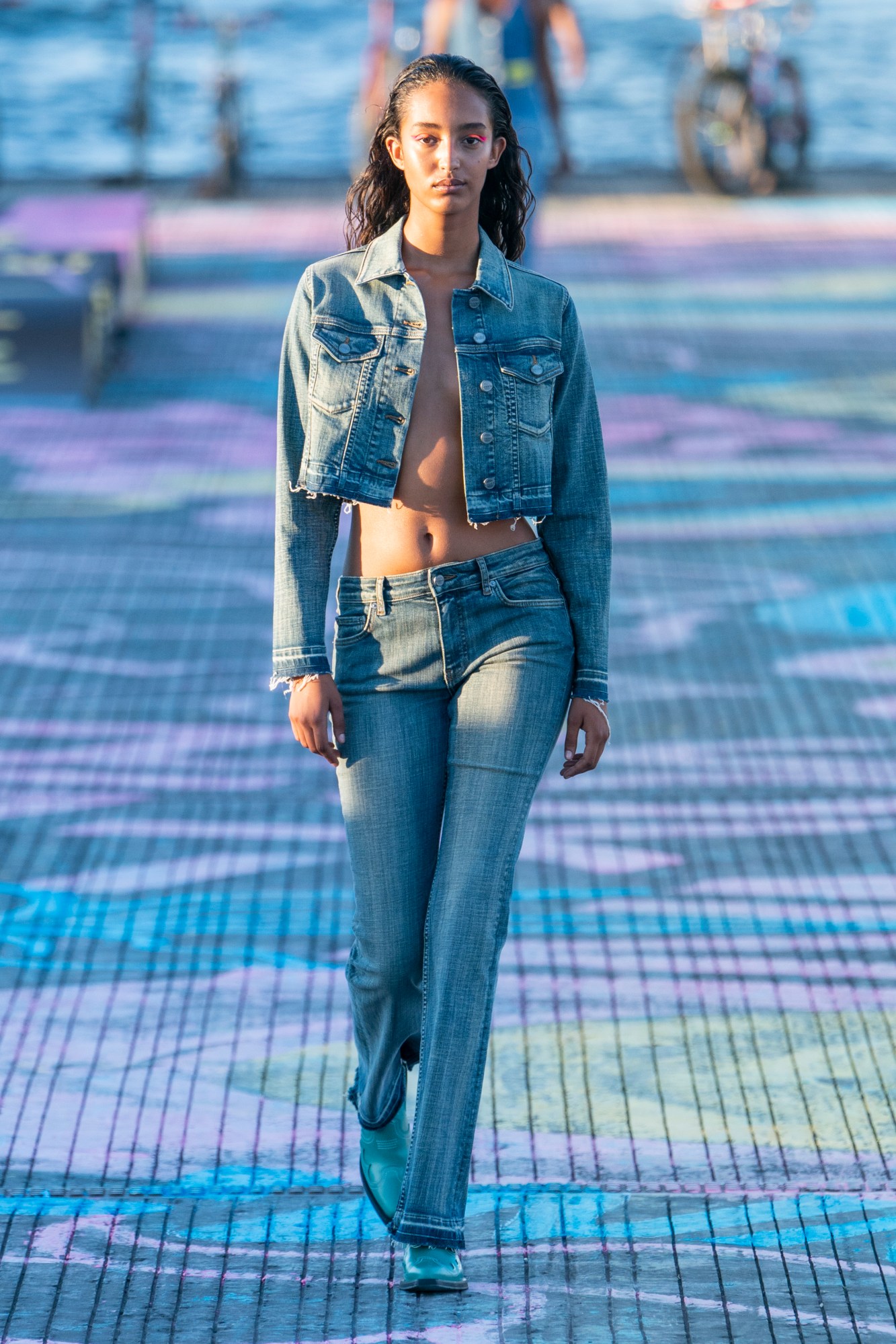
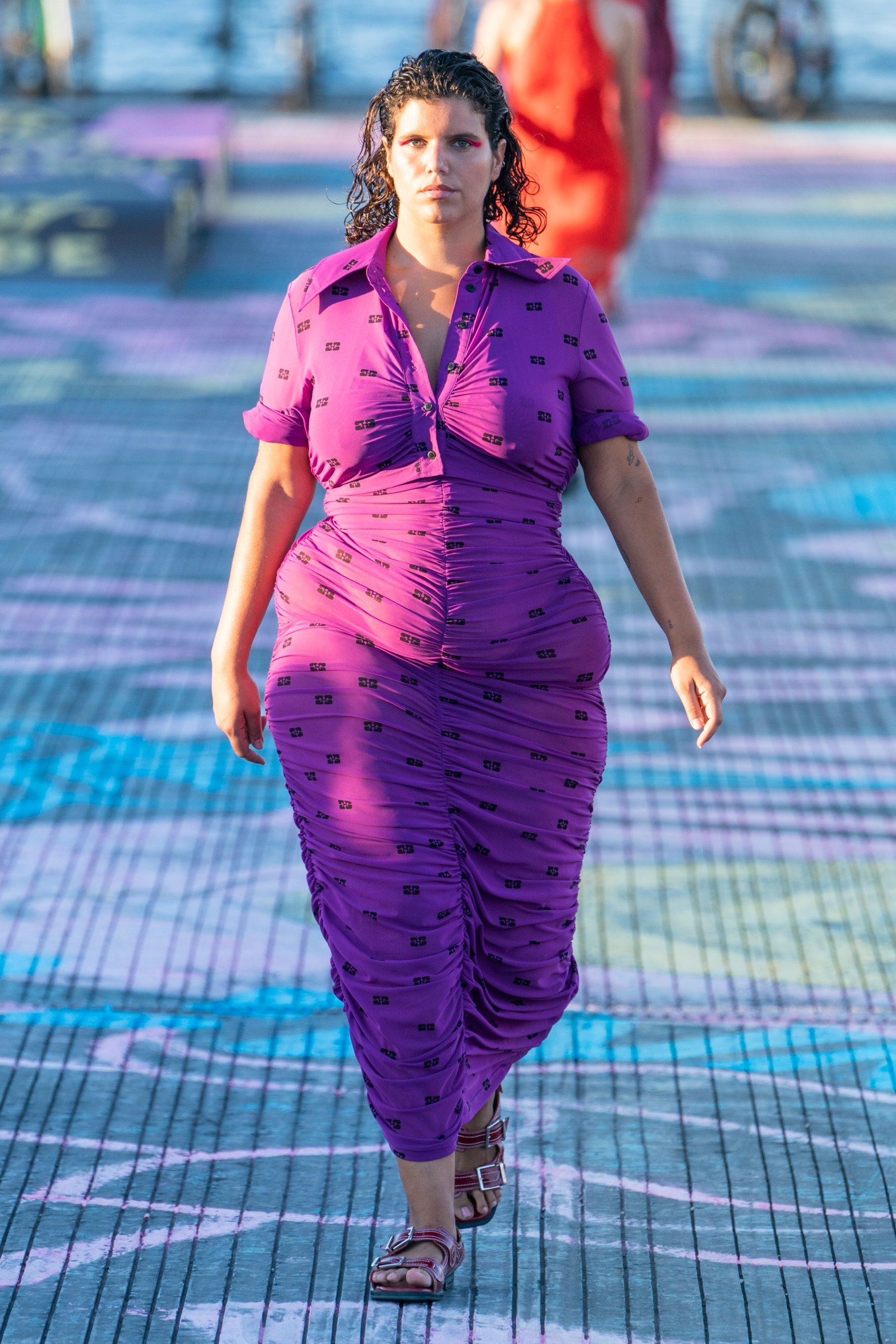
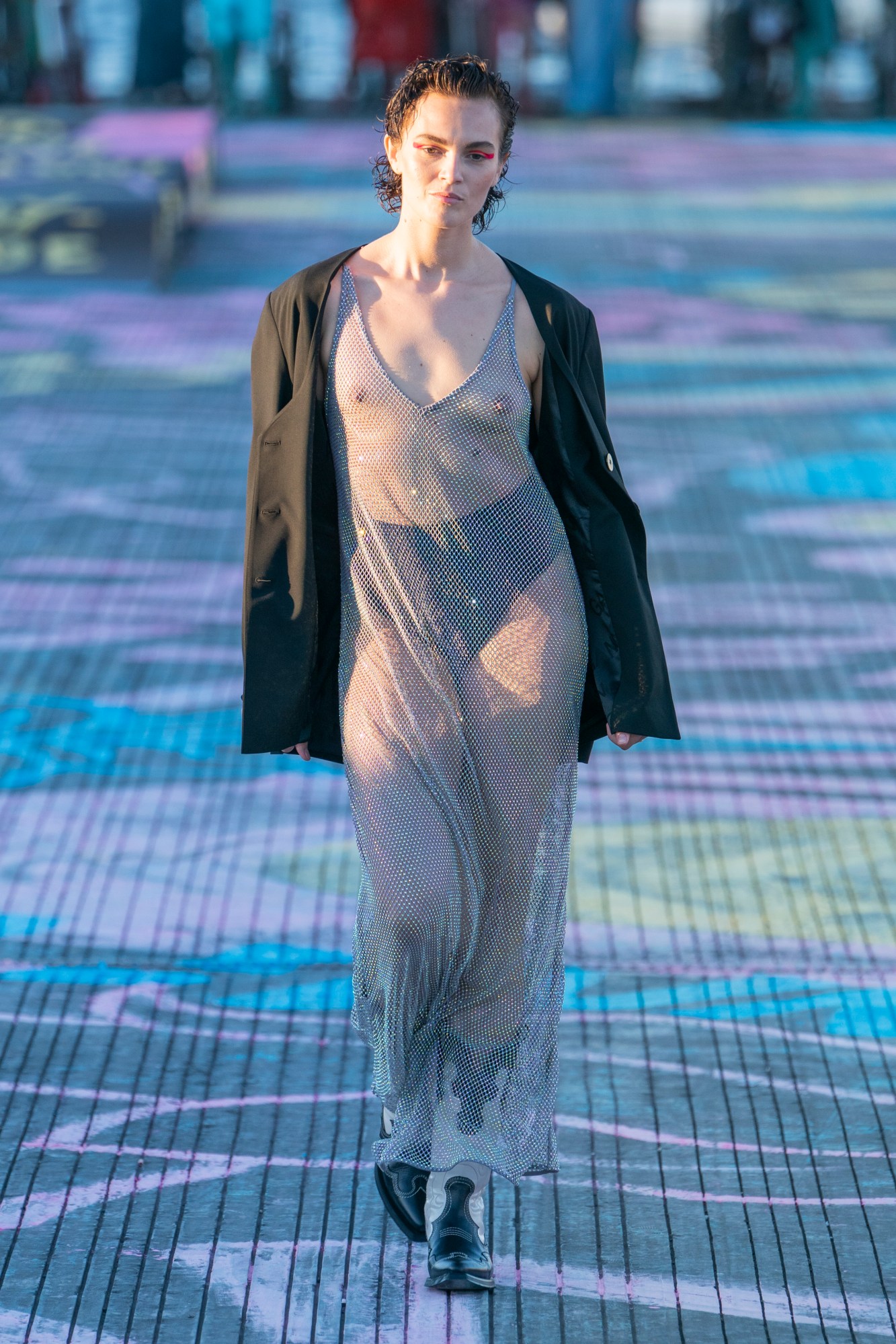
Ganni
Despite what you may have heard from Emma Chamberlain, the best way to get around Copenhagen is indisputably by bike. Fitted out with generous cycling lanes and relatively few cars, riding around the city’s on two wheels really is the way to do it. Few could agree more than Ditte Reffstrup, the creative director of Ganni, Copenhagen Fashion Week’s flagship show. ‘Joyride’ — the collection that the Danish brand presented by the city’s impeccable waterfront at sundown — embodied the freewheeling spirit that defines life in the Danish capital, especially in summer. Bookended by a BMX stunt performance and a finale that saw the models cycle down a broad runway covered with joyful pastel chalk scribbles, the collection itself embodied an air of practicality and liberty: easy-wearing cropped denim separates came alongside body-con purple jersey dresses; pouffe sleeved mandarin doll dresses and puckered tops sat next to sharply tailored oversized aquamarine blazers.
In a testament to the ubiquity of Ganni’s appeal, a series of fresh collaborations lay at the heart of this season’s offering — block-coloured windbreakers were a product of an ongoing partnership with Icelandic outerwear specialists 66North, while denims and wax jackets came courtesy of new link-ups with Levi’s and Barbour respectively. Rather than hammer home a distinct point of view, this was a collection with global appeal; one that made it clear that whoever — and wherever — you are, you can be a Ganni Girl, too.
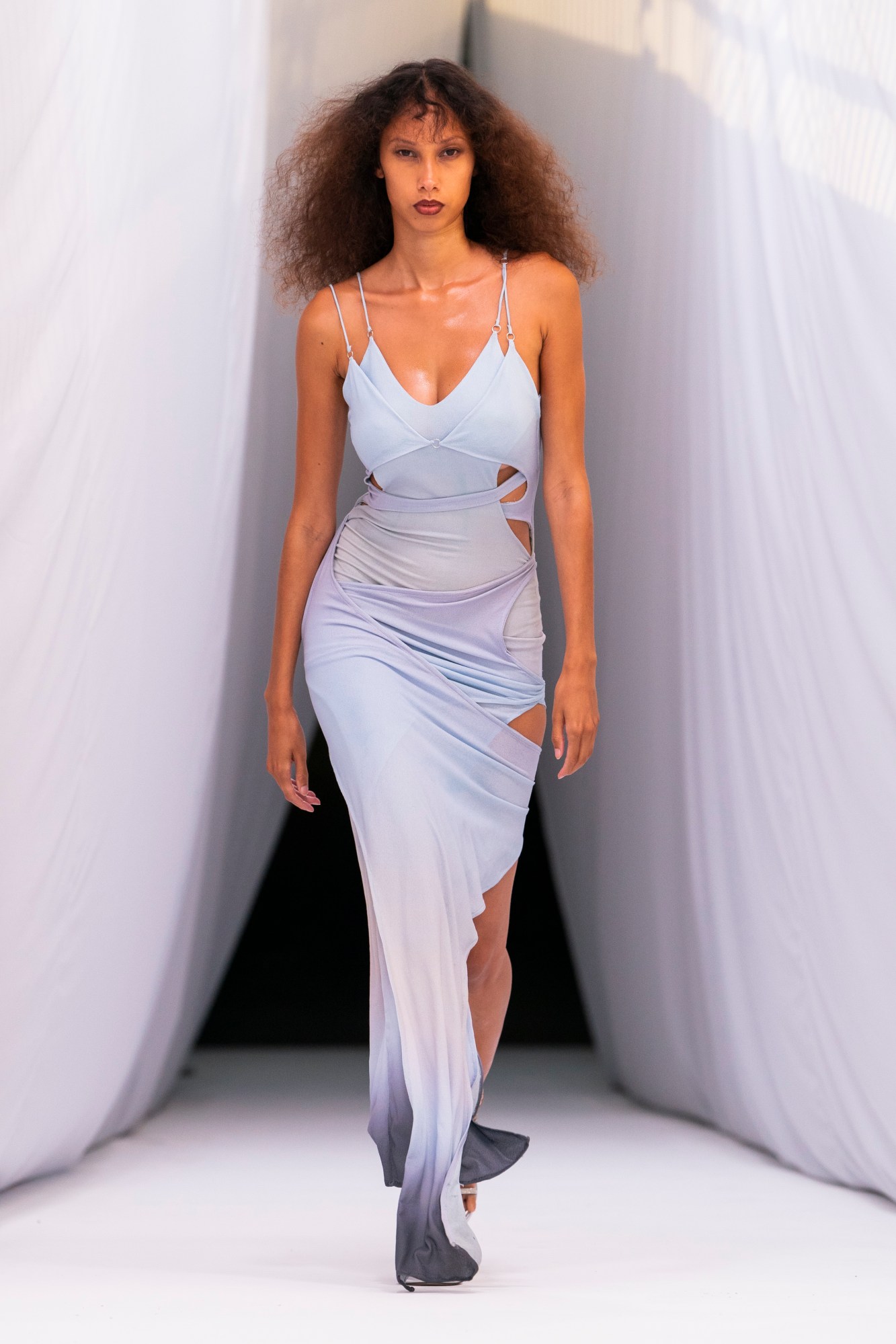


Jade Cropper
Proving that the Y2K revival is truly alive and well was Jade Cropper, who took to the gravel-strewn roof of an inner-city car park to present her latest body of work. Opening with a floor-skimming bleached denim column dress, what ensued was a parade of slinky-yet-grungy clothes that reimagined staple early 00s silhouettes and textures through a prism of refinement. Rather than rhinestones, double spaghetti strapped bias cut ombré dresses came with elegant cut-outs while laddered knit tops came with braided necklines that had a faintly Y/Project-y flair to them. Diaphanous chiffon blouses and roughed-up grey denim wrap jackets came closed up with lingerie-like hook fastening, and a closing suite of looks in dusty tones of pink and peach lifted an otherwise restrained palette with a splash of colour.
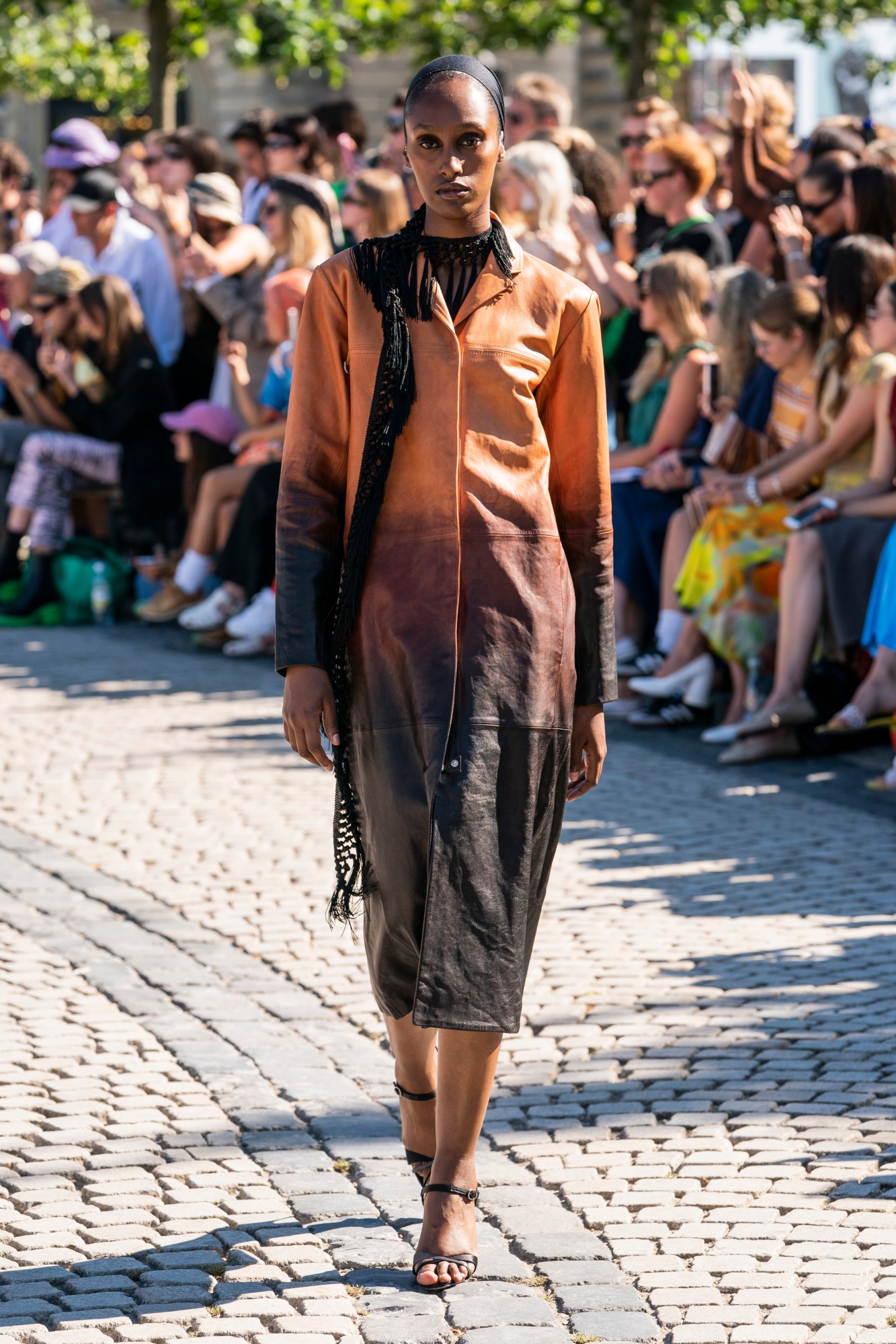
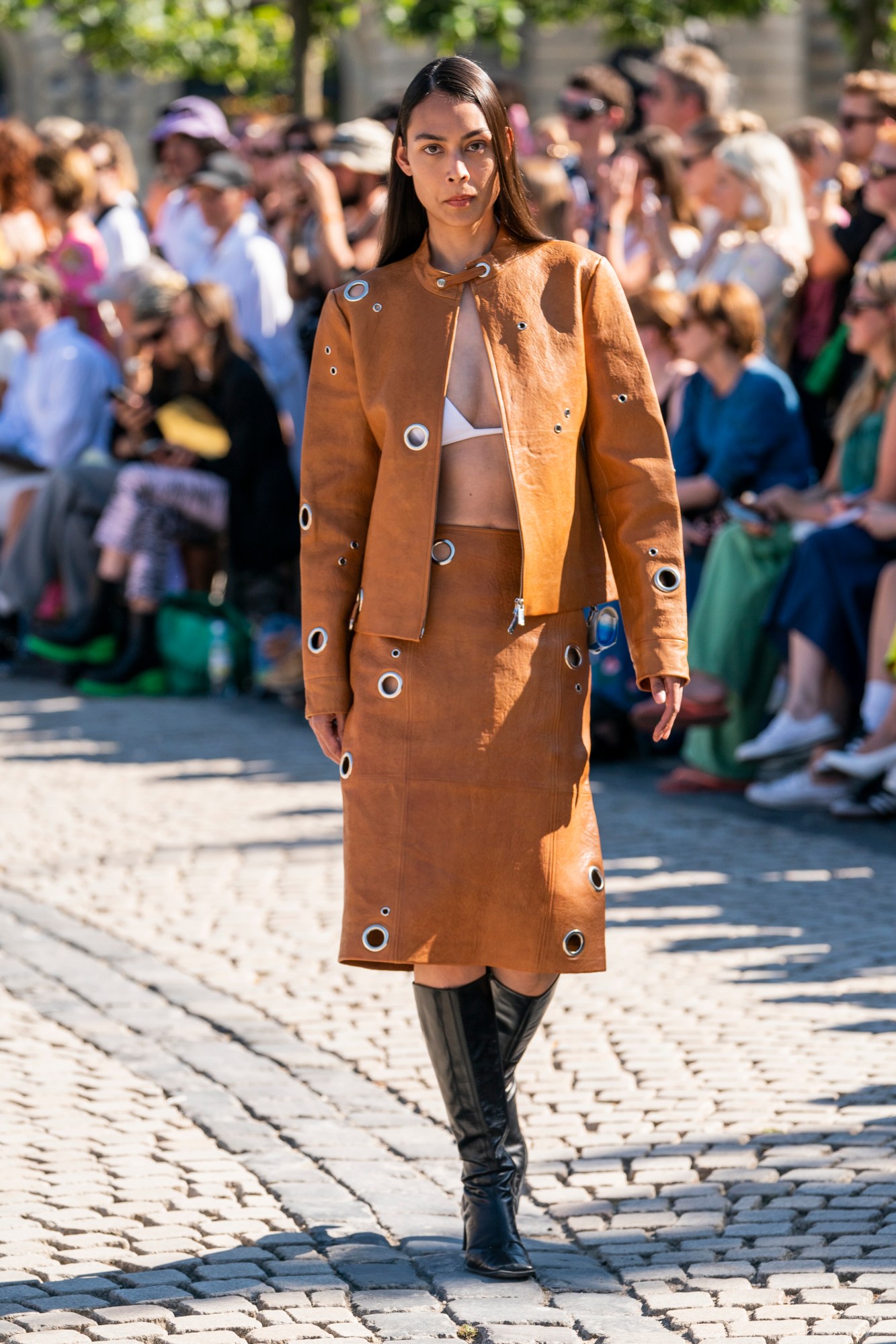

Saks Potts
A good number of the designers presenting this season decided to turn their shows into declarations of love for Copenhagen, the city they live and work in. None, however, can say they did so quite like Saks Potts. Presented in an open-to-the-public spectacle attended by an estimated 4000 people on Kongens Nytorv, Denmark’s largest square, the collection was an ode not just to Copenhagen, but also to one of its most celebrated residents: Mary, Crown Princess of Denmark. Australian by birth, the future Queen first moved to the Nordic nation in 2001 to join her then-fiancé, Fredrik, Crown Prince of Denmark. Frequently spotted around the square where the show took place, she quickly earned renown for her understated, elegantly bohemian style — a natural fit for a Scandi audience!
It was from these looks that Barbara and Cathrine, the designer duo behind the brand, drew inspiration this season, allowing Mary’s insouciantly regal air to inform an ombré-dyed leather coat, suit jacket and skirt; a butterscotch leather flight jacket with metal o-ring cut-outs, and halterneck pinstripe cotton dresses worn with waist chains and tails of glistening fringe. This earthy timbre was elevated with a dash of party-ready razzle-dazzle in the form of gowns draped from trails of gold lamé and tube dresses and skirts in cascades of jangling hot pink paillettes. Long live Saks Potts!
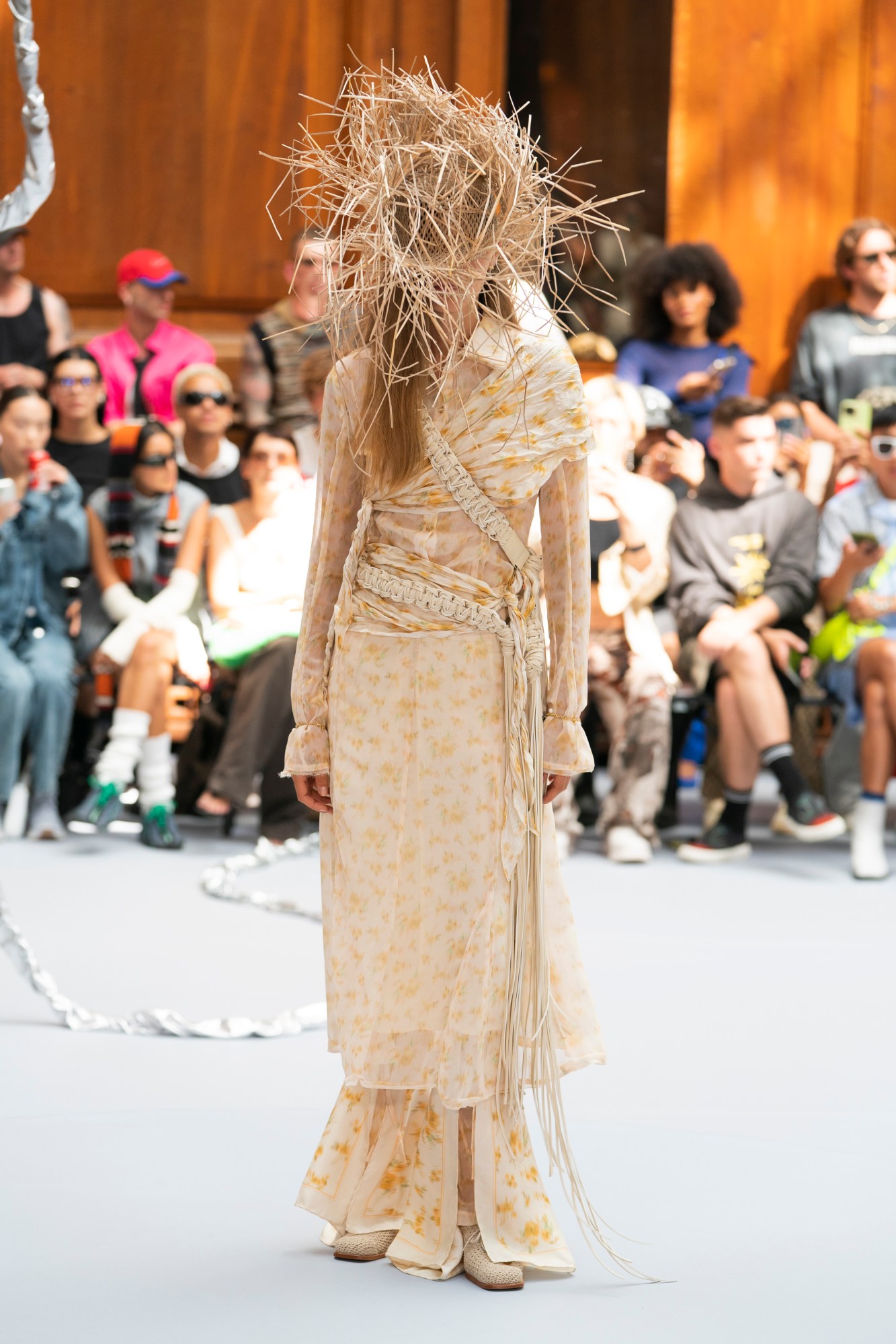
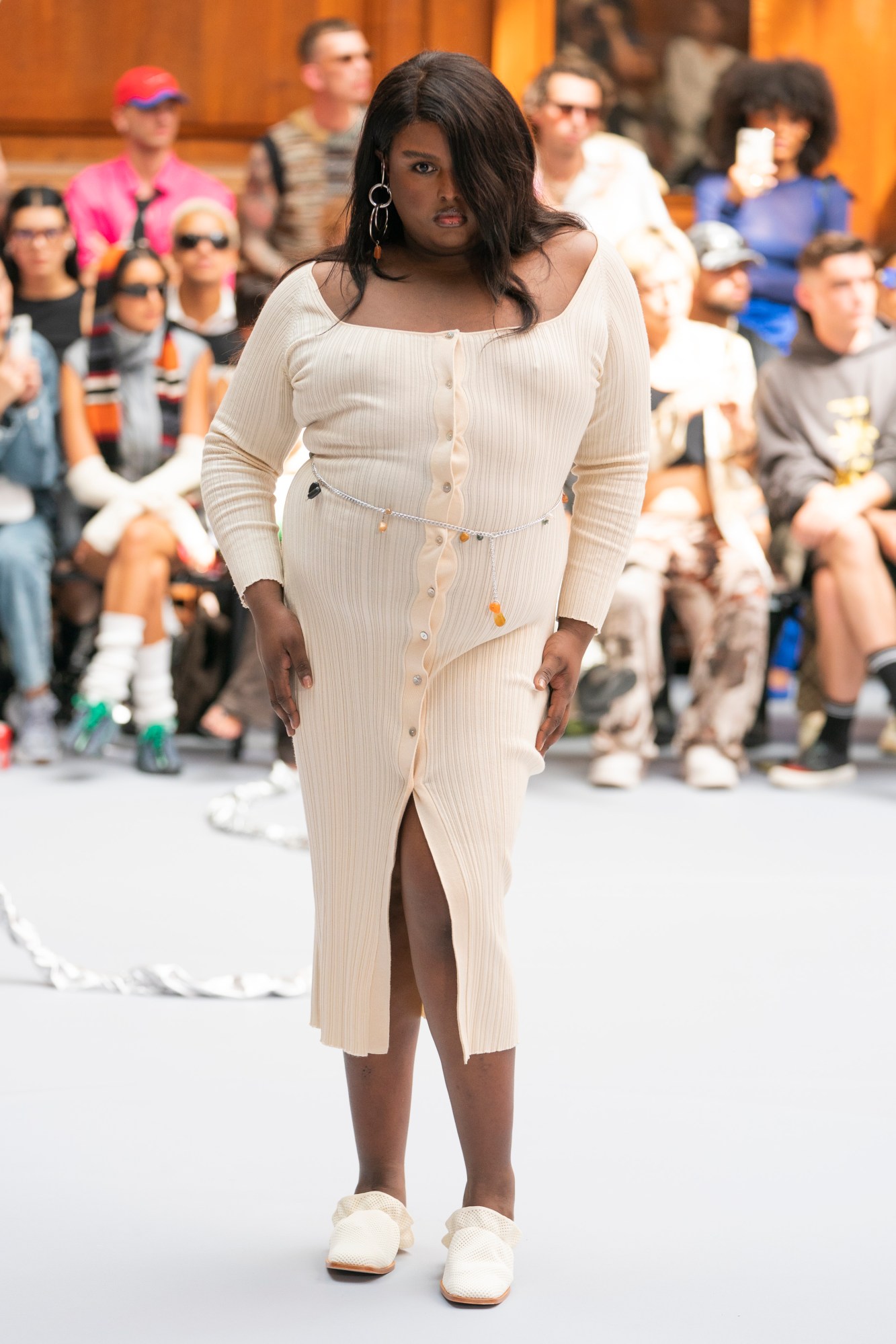
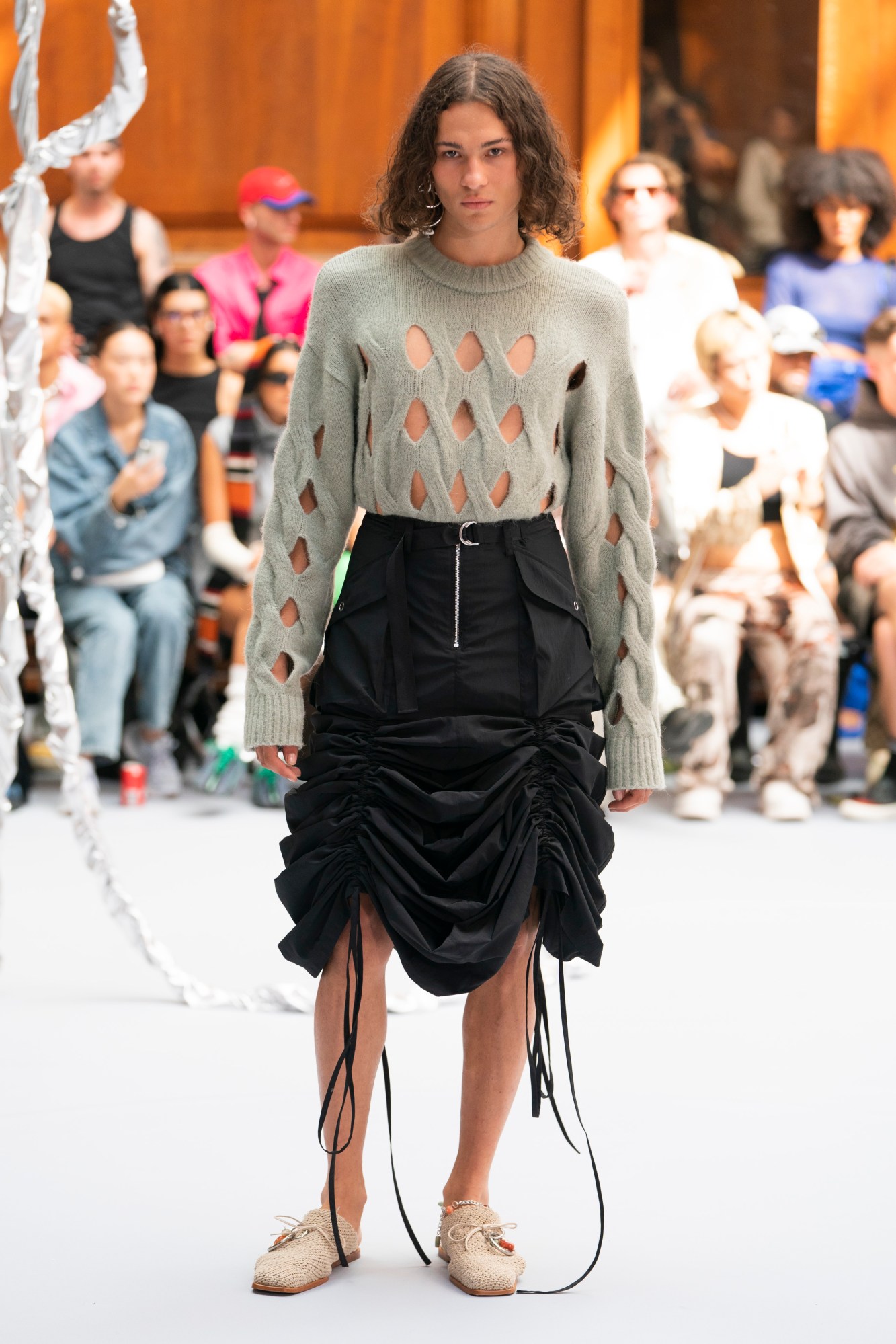
Holzweiler
A major trend that emerged over the course of the week was invariably a lighter, more refined take on bohe-miana, and leading the charge here was Holzweiler. For its first physical show on the CPHFW schedule since before the pandemic, the Norwegian label – fresh from the announcement of its lucrative investment deal – landed in the Danish capital with a bang. Quite literally, given that the jumping-off point for this season was observing the twist, turns and billowing volumes of a parachute in flight.
Ruched dresses in floral printed cottons and airy linens tumbled down the body, and harnesses and belts were crafted in fringed macramé. Woven hats and baskets were woven from the straw a parachutist would see rushing ever closer on their descent, but the most literal translations of the season’s source of inspiration were the louche skirts and bodysuits draped from translucent printed polyurethane. Then came the closing look: a faintly bridal ensemble comprising an airy linen dress with exploded sleeves and an intricately knotted harness, trailed by a full, used parachute canopy, and worn by i-D cover star Mona Tougaard. An angel fallen from the heavens if ever there was.

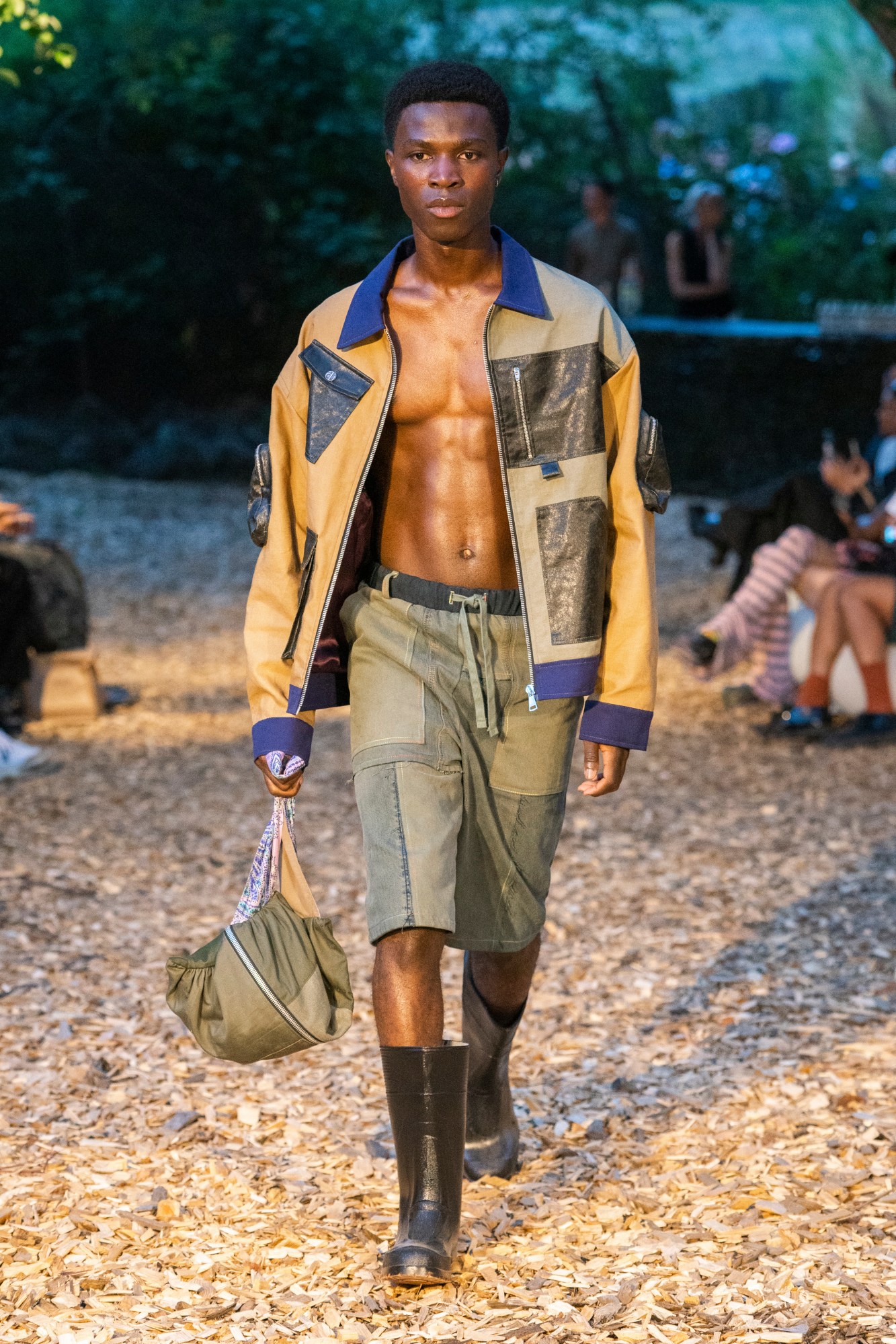
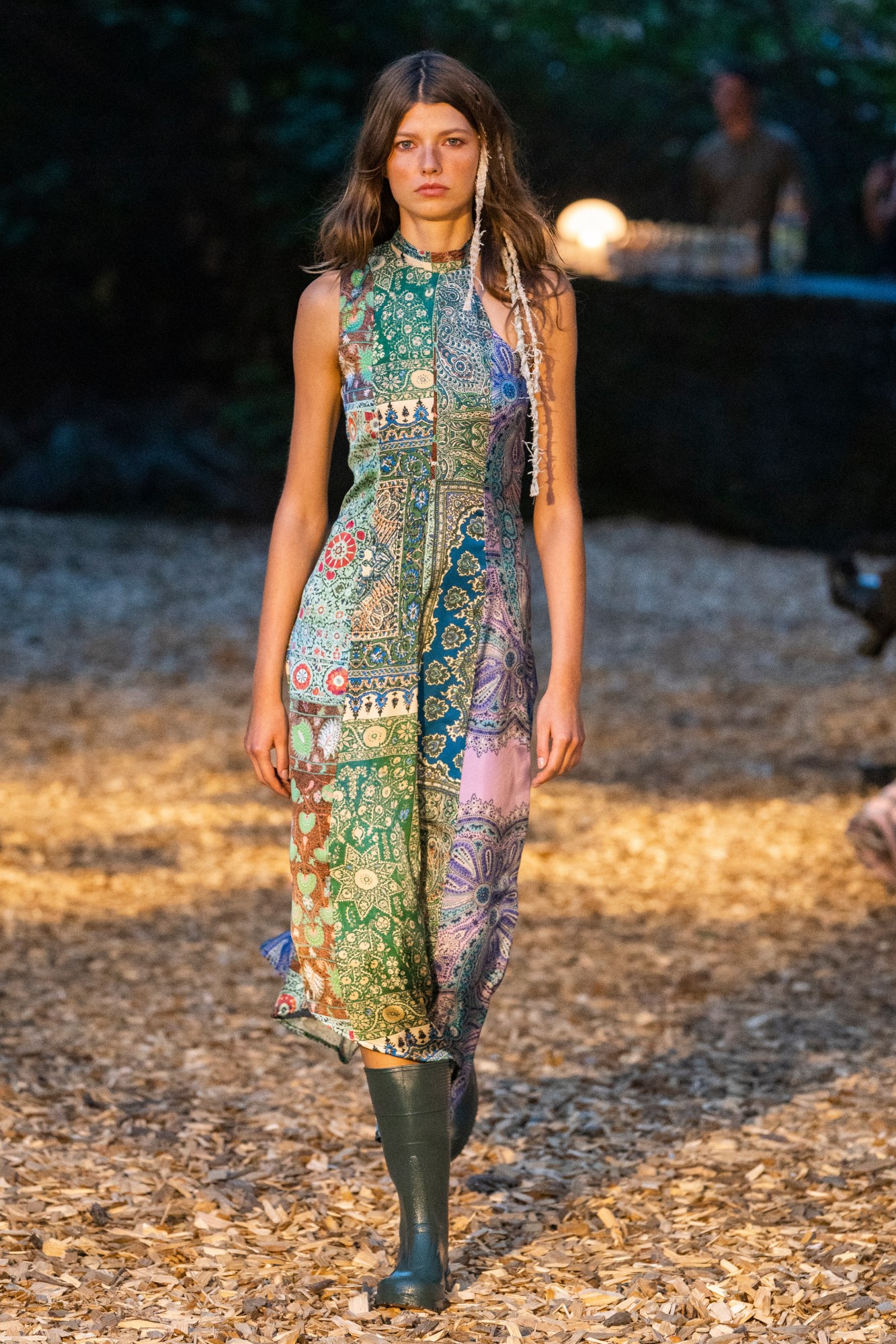
(di)vision
Another brand to tap into the nature-minded air that permeated collections seen across the city was buzzy young Copenhagen label (di)vision. While for other brands, it was about leaning into a spirit of soft bohemia, Simon and Nanna Wick decided to take a tougher tack. Taking their audience out into the woods on the city’s outskirts, they presented a collection that nodded to Francis Ford Coppola’s 1979 Vietnam war epic, Apocalypse Now. A militaristic tone made itself felt in the collection’s predominant palette, a camouflage-adjacent spread of mud browns, mossy greens and sandy beiges; but rather than an ode to army dress, what we saw felt more like an exploration of how signifiers of violence and toughness can be transfigured to reveal something softer.
Panels of swatches salvaged from surplus military gear were laced together into bodycon tube dresses, or used to create the brand’s signature bombers, featuring a splicing vertical zip down the back. These camo tones were tempered by the hippyish flair of loose-fitting shirts and sleek column dresses in kaleidoscopic paisleys, illuminated by the toadstool lamps lining the runway. It set the tone for the evening-ready sensuality of diaphanous checkerboard knits and halterneck string bikinis in denim, paisley and bright faux fur.
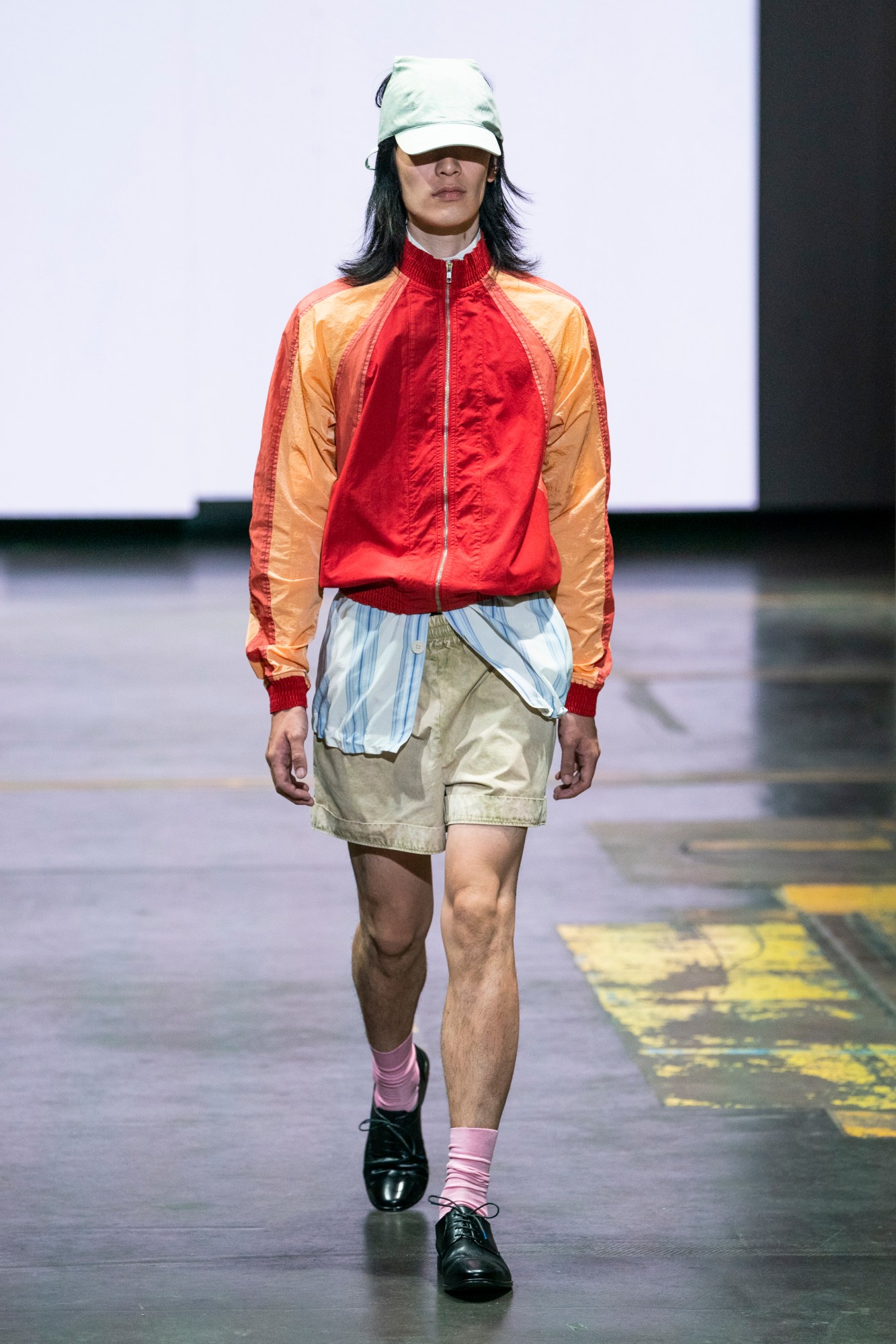
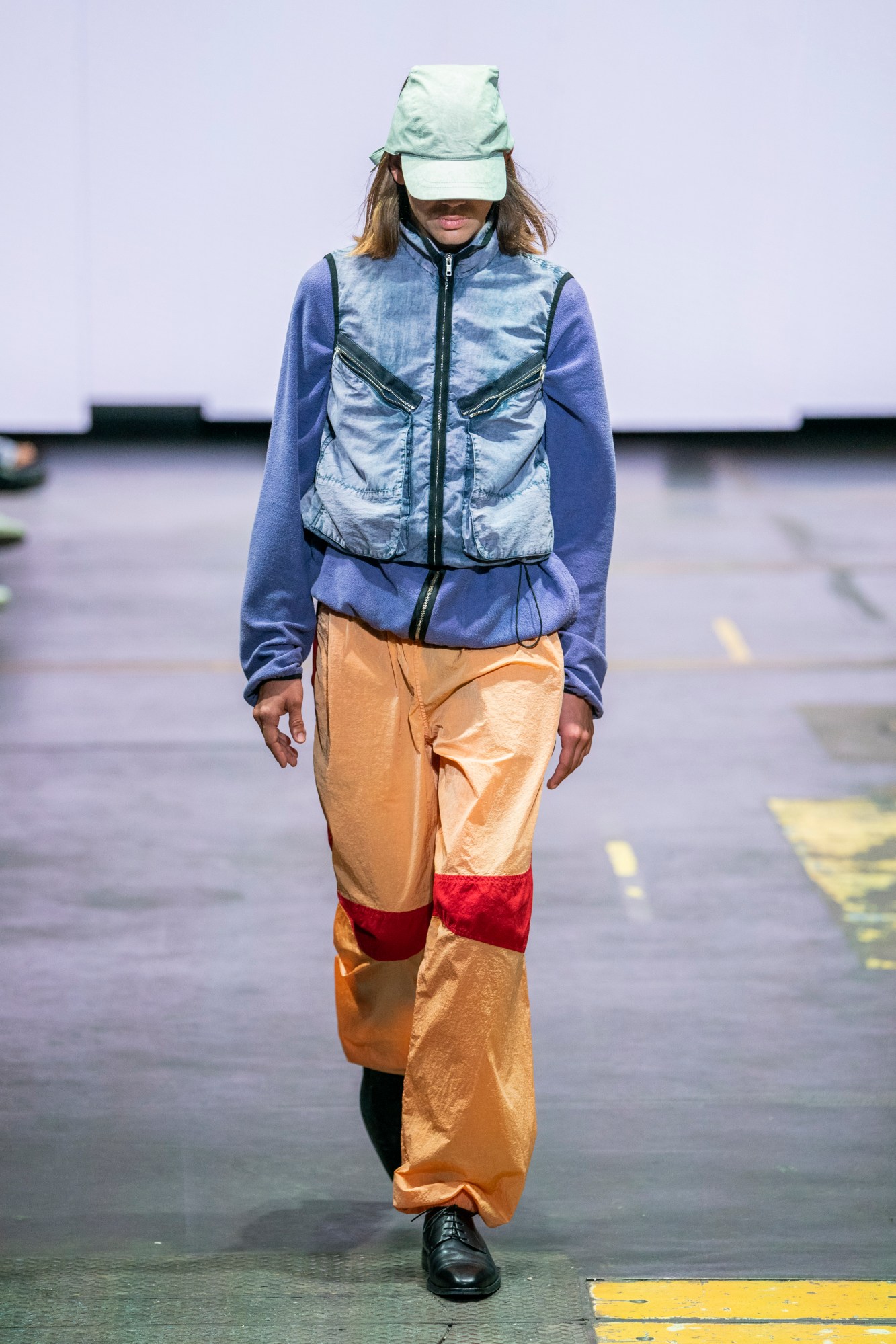
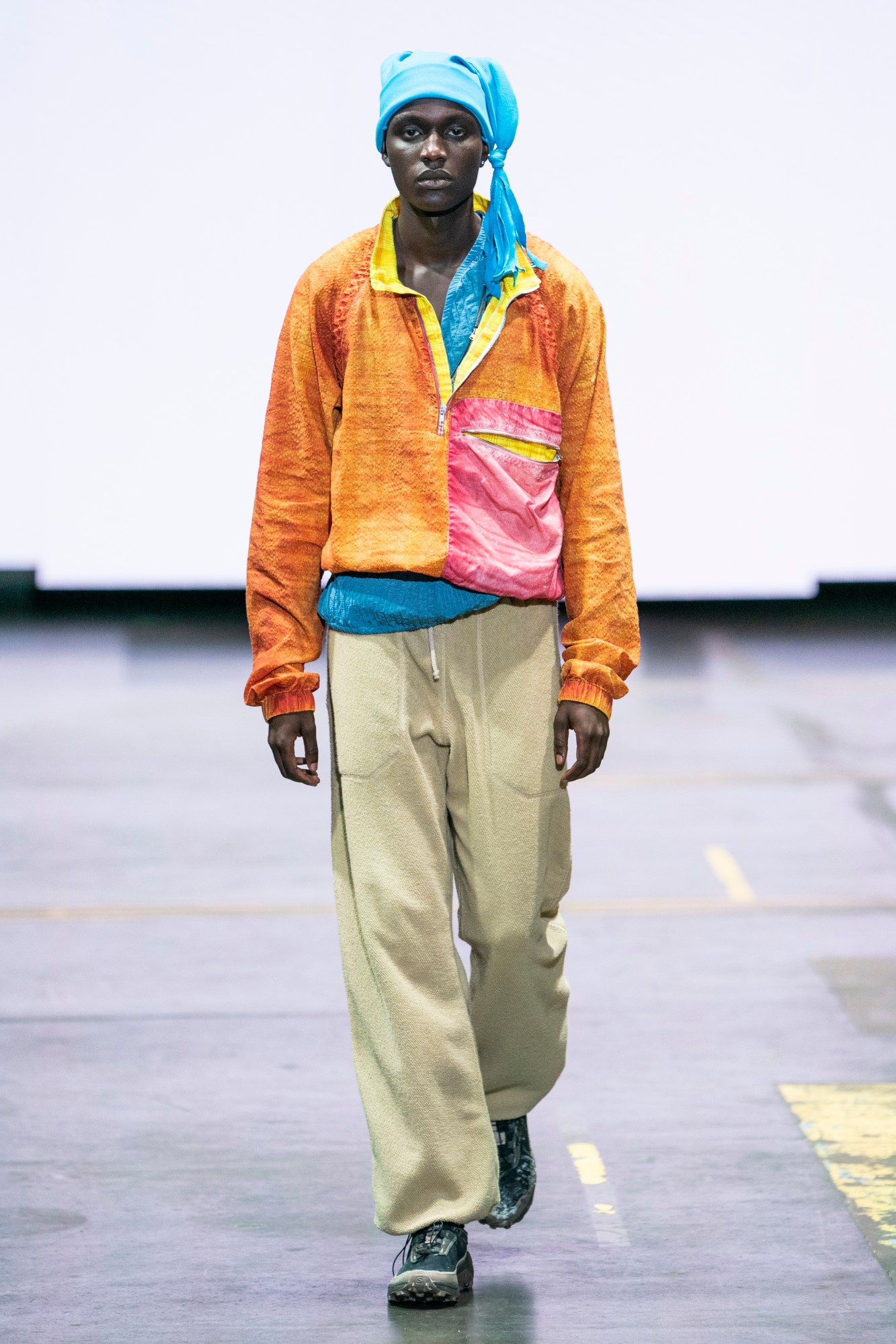
RANRA
Known for its performance-informed, sustainably-crafted menswear made with the fickle climates of both Iceland and London in mind, Arnar Már Jónsson was never a brand that you’d have instinctually associated with colourful expression. Under its new name, though, that seems to have changed. Whether it was a conscious statement on the brand’s new dawn or not, for its very first runway presentation as a contestant in the Zalando Sustainability Award, Reykjavik/London-based label RANRA leaned full tilt into a rainbow spread of hues.
The direct inspiration for this season’s mint ice cream hoodies and denim bombers, mandarin and strawberry panelled Harringtons, rose short-shorts, lavender tactical vests, and forest and moss green technical trousers were in fact huldufólk. According to this season’s show notes, these are the ‘hidden people’ of Icelandic lore that “look and behave just like humans, but are slightly happier, more beautiful and better dressed”. To be sure, the audience was all the happier for seeing these candy-hued outfits – the striking effects of which, it should be noted, were achieved using the brand’s stringent natural dyeing techniques – so much so that they took home the prize, winning €20,000 and the chance to create an exclusive, responsibly produced capsule for the pan-European e-tailer. Skål to that!
Follow i-D on Instagram and TikTok for more fashion week coverage.
